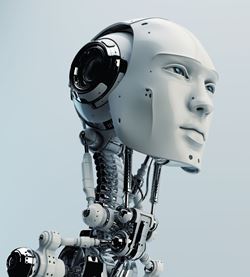China has sent its third crew to its under-construction Tiangong Space Station which is expected to be completed by the end of 2022 after launching its core module, Tianhe, in April 2021.
Carried by a Long March 2F rocket, the Shenzhou 14 spacecraft lifted off from the Jiuquan Satellite Launch Center in the Gobi Desert on 4 June.
Shenzhou 14 is connecting with Tiangong’s core module, Tianhe, where the astronauts are expected to stay for at least six months.
The three astronauts include Liu Yang, who became China’s first woman in space abord Shenzhou 9 in 2012, along with veteran astronauts Cai Xuzhe and Chen Dong.
The crew will be overseeing the arrival of Wentian ("Quest for the Heavens") and Mengtian ("Dreaming of the Heavens"), two additional modules due to launch in late July and October, respectively.
Once the additional modules dock with Tianhe, the crew will use Tianhe's large robotic arm to reposition the modules from the forward docking port to lateral ports in coordination with the ground control crew.
The successful implementation of the modules will complete Tiangong’s build and will later see the T-shaped space station joined by a large ‘Hubble-like’ telescope named Xuntian (“survey the heavens”) which will share the space station's orbit.
Xuntian will have a 6.6-foot diameter mirror like Hubble yet with a field of view 300 times greater. Xuntian’s aim will be to survey 40 per cent of the sky over 10 years using its 2.5-billion-pixel camera.
At a recent press conference, astronaut Chen Dong said: "The Shenzhou 14 mission is key to the construction of the space station, with more difficulties and greater challenges."
Latest News
-
Universal Music Group partners with Nvidia to create antidote for 'AI slop’
-
East of England Co-op finalises test of digital shelf edge communication platform
-
Barclays makes strategic investment in Ubyx
-
XFusion hires Chinese investment bank in preparation for IPO
-
UK orders X to tackle Grok deepfake abuse as Ofcom steps in
-
Intel bets big on 18a with Panther Lake as rivals tout AI gains
The future-ready CFO: Driving strategic growth and innovation
This National Technology News webinar sponsored by Sage will explore how CFOs can leverage their unique blend of financial acumen, technological savvy, and strategic mindset to foster cross-functional collaboration and shape overall company direction. Attendees will gain insights into breaking down operational silos, aligning goals across departments like IT, operations, HR, and marketing, and utilising technology to enable real-time data sharing and visibility.
The corporate roadmap to payment excellence: Keeping pace with emerging trends to maximise growth opportunities
In today's rapidly evolving finance and accounting landscape, one of the biggest challenges organisations face is attracting and retaining top talent. As automation and AI revolutionise the profession, finance teams require new skillsets centred on analysis, collaboration, and strategic thinking to drive sustainable competitive advantage.
© 2019 Perspective Publishing Privacy & Cookies








Recent Stories